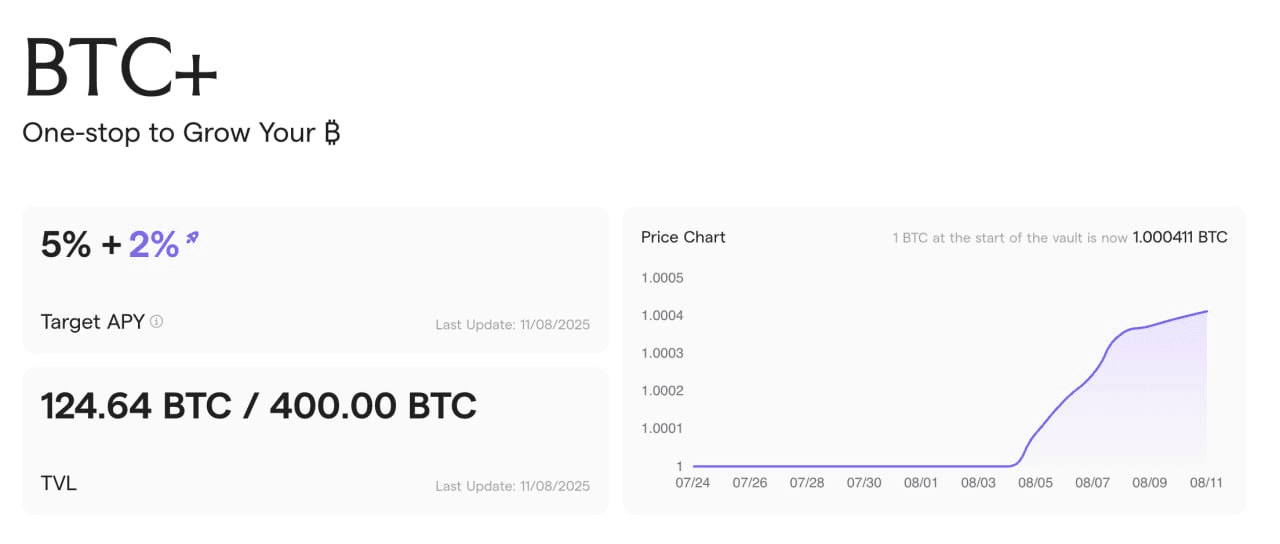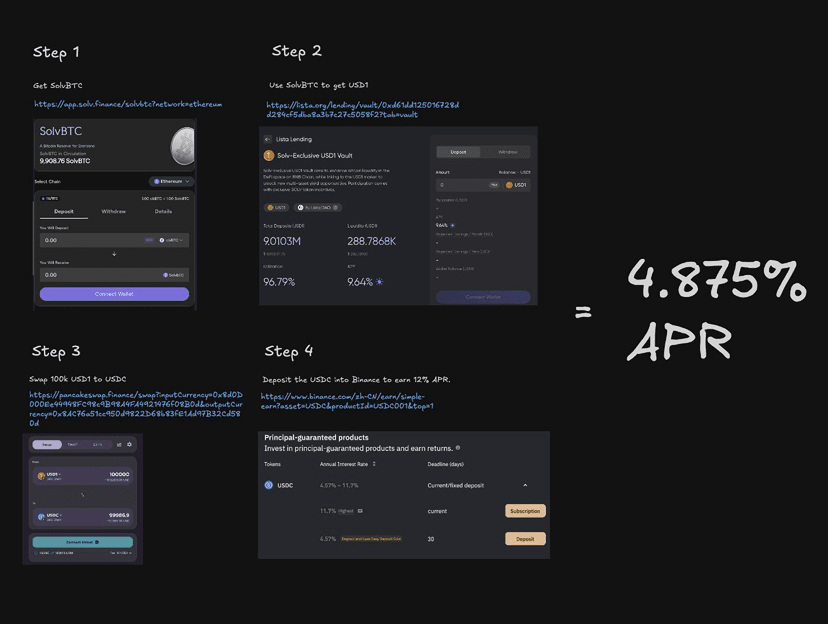You hold Bitcoin, which was originally just static storage + value preservation, but have you ever thought about making it 'automatically earn money' like a salary? What Solv Protocol does is exactly that.
It allows you to deposit BTC into a Staking Abstraction Layer (SAL), while still having exposure to BTC's price and earning yield, and what you receive is a liquidity certificate called SolvBTC, backed 1:1 with BTC, and you can continue to play in the DeFi space. The whole process is both secure and decentralized, which is pretty cool!
Breaking it down step by step to see how it works:
1. Deposit, lock, obtain certificates
You deposit BTC into Solv's smart contract, and the system gives you SolvBTC, which is a liquidity certificate usable across chains. The key is that you haven't sold your BTC, but it has started to 'earn a salary'.
2. Continuous earnings, and make use of DeFi
After obtaining SolvBTC, you can further convert it to xSolvBTC — you continue to receive staking rewards, but it can still be used in various DeFi protocols, making it much more flexible than traditional staking.
3. Portfolio multi-choice
The Solv Platform has several structured funds, such as directly participating in DeFi liquidity, traditional CeFi lending strategies, or Real-World Assets (RWA) portfolios, allowing BTC to truly become 'money generating money'.
4. Wide coverage, multi-chain with low switching costs
Solv has multi-chain support ready: Ethereum, BNB Chain, Avalanche, Berachain, Merlin, acting like an expanded DeFi hub where BTC flows swiftly.
5. Institutional-level deployment + security assurance
They have on-chain BTC reserves, with partners including Binance, Blockchain Capital, Laser Digital, etc., and have been audited by several top security firms such as Quantstamp and Certik, ensuring visible security.
Alright, let's talk about the market to make it real:
TVL exceeds $2B, with the value locked in BTC-related products amounting to $1.68B, indicating that the demand is genuinely present.
Annual revenue is also noteworthy: annual transaction and management fees exceed $7.8M, which is not a small amount.
Solv's prime highlights:
BTCFi provides a clear path: minting BTC from cold storage into DeFi, the Solv layer allows it to maintain value while also earning money — a rare way to play in the Bitcoin world right now.
Flexibility is significantly higher than traditional staking: you have staking earnings while also being able to take liquidity and participate in strategies, making this composite power play suitable for both seasoned users and newcomers.
Imaginative bridging with traditional finance: it connects the BTC earnings chain with traditional ETFs, securities markets, and even RWAs, almost like installing a European train network for BTC, allowing it to run faster and further.
Of course, there are a few points you need to keep an eye on:
Smart contract risks are everywhere, especially for cross-chain and multi-strategy protocols, so caution is warranted.
Market competition is heating up, with many players in the BTCFi space, Solv needs to maintain its uniqueness and UX to win.
Unlocking rhythm and yield expectations is key, and the token's momentum needs to be clearly estimated to maintain a stable mindset.
In short, here’s a clear statement on whether it’s worth keeping an eye on:
Solv Protocol is a DeFi Layer that allows your BTC to evolve from 'just lying flat' to 'being able to start your own business' — it gives you both gains and freedom, and builds a bridge to the traditional and DeFi worlds.


